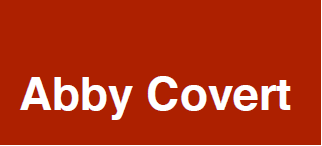Information Architecture (IA) for Authors
My core experience professionally is as an information architect who writes about information architecture. Given my overlap of writing and information architecture skills I have a unique point of view on how these skills work together when taking on the role of author.

In this piece I will attempt to convince you that information architecture is a skillset that great authors already use. I will also posit that people looking to improve their authorship should make a point to work on their information architecture skills.
This article is organized into the following structure:
- What is Information Architecture?
- Four IA Lessons for Authors
- Four Ways to Improve a Book’s Information Architecture
What is Information Architecture (IA)?
Information architecture (IA) is the practice of deciding how the parts of something will be arranged as a whole. If that sounds like it could be broadly applied to pretty much any medium, then you are reading that correctly.
‘Information architecture’ as a term was first coined and related to design, architecture, data and technology – but it is also a clear case of something being named far after it came into existence, if it ever didn’t exist.
- The way your favorite restaurant’s menu is organized is IA.
- The way you arrange (or DON’T arrange) your pantry is IA.
- The signs and signals that help you know how to get through a crowded airport to the right gate is IA.
Information architecture is all around us and most of us use the information architectures created by other people everyday. Many of us additionally create information architectures for others to use. And authoring is a job in which IA has heightened importance.
In terms of books, an information architecture is the structure and language the author chooses to describe the content they have to present, and the arrangements they then present that content in.
The sections, chapters, tables of content and indexes are all the primary artifacts of the information architecture of a book. But it doesn’t end there. Many more information architecture decisions are made at lower levels, like on each page.
- How are paragraphs used to break up the content?
- Are key terms highlighted?
- Which content is delivered as a call-out vs. in-line?
- Are there images used to make key points?
- Are figure references needed?
- What about captions?
- Are you using footnotes or endnotes?
- What is your approach to indexing?
All of these decisions build the information architecture that readers use to understand the intent an author had for their book. Well-written books can have a poor information architecture, and therefore not be a great reading experience.
Some books intend to be clear. Some books intend to be exhaustive. Some books are written to obfuscate meaning and not present it clearly on purpose. I would argue that even books that prioritize obfuscation of meaning have to have a strong approach to information architecture in order to be successful.
Take House of Leaves by Mark Z. Danielewski as an example. This book is nonsensical upon first approach. It is full of bobs and weaves that would leave any reader emotionally and physically exhausted. The information is obfuscated on purpose and the architecture the author provides does that beautifully.
To say this book has no architecture would not be giving the respect where it is due for the artful use of information architecture to reach the unique intent of the author.
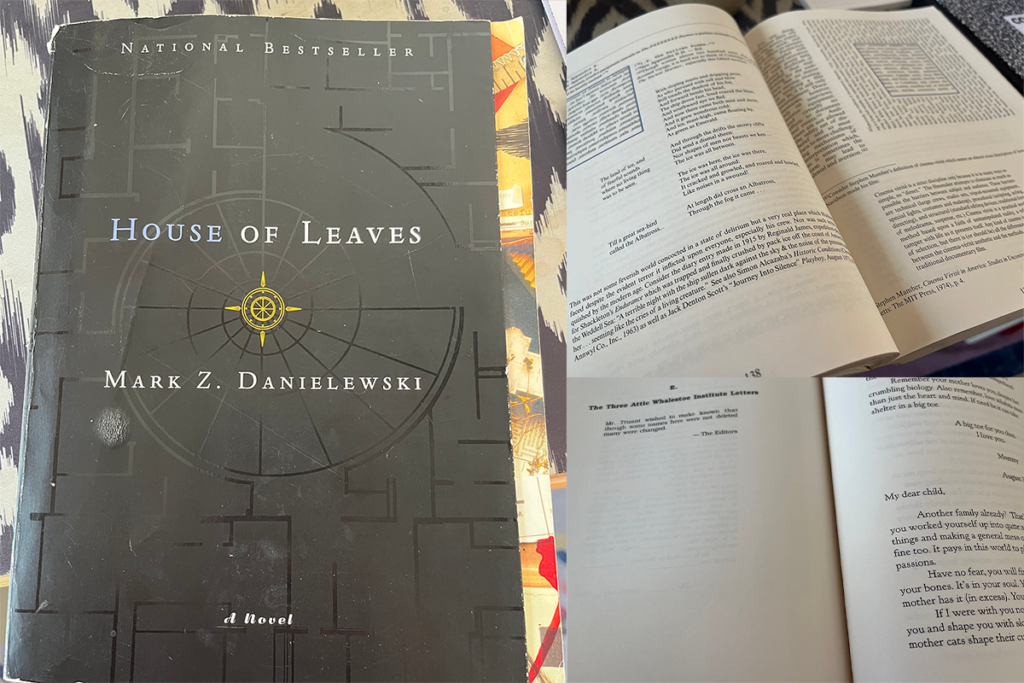
This book was structured to feel like sifting through a pile of ephemera found in an abandoned house. The intention was to put the reader into the shoes of the book’s main character who is … you guessed it … sifting through a pile of ephemera found in an abandoned house while trying to make sense of it through reverse engineering bits and stitching those bits together into larger realizations. It is a brilliant example of information architecture in authorship, and in fiction writing. There is a rumor he is working on a movie adaption, and I hope he does so we can see how the original information architecture is interpreted into another medium.
In my humble opinion, strong attention to information architecture is the key in a lot of the books that people love to read. It can also be the key to a book’s effectiveness. Take as an example the bible’s use of the formula ‘book+chapter:verse’ as the accepted shorthand language amongst its readers.
This is a brilliant use of information architecture to enable deep-linking to specific lessons and stories in a rather complex system. This IA classic is absolutely one of the key mechanisms behind the bible’s effectiveness as a communication tool. Unsurprisingly this referencing syntax wasn’t added til the 1200s and wasn’t perfected to the system it was today until the 1500s. As is the case with many of the strongest information architectures, they are developed based on people’s needs and iterated on over time.
Whether it is in the unique approach to language or tone, the physical layout and design, the ways the content is arranged, unique wayfinding mechanisms, or the organizational metaphors and frameworks that are used to hang other concepts off of – information architecture can be the difference between a book that reaches the intention of the author, and one that misses the mark entirely.
Four IA Lessons for Authors
I have drawn four main take-aways about information architecture from my experience as an author and information architect. My hope is each can apply to whatever writing project you are taking on right now.
#1 Maps are helpful on any trek
One of the most helpful skills of information architecture I can suggest any author explore is diagramming. I find diagrams so fascinating that I wrote a whole book about them. But it was actually when I was writing my first book about information architecture that I first explored using diagrams of my book to work on my book.
When I was writing How to Make Sense of Any Mess, there was a moment when I had a good sense of what I wanted to write at a high-level but needed something to keep me on that path to completion of the project.
So I used my skills as an information architect to make a map of my intended reader path through the content. Then I used that map to write the manuscript for what would become the final structure of that book.

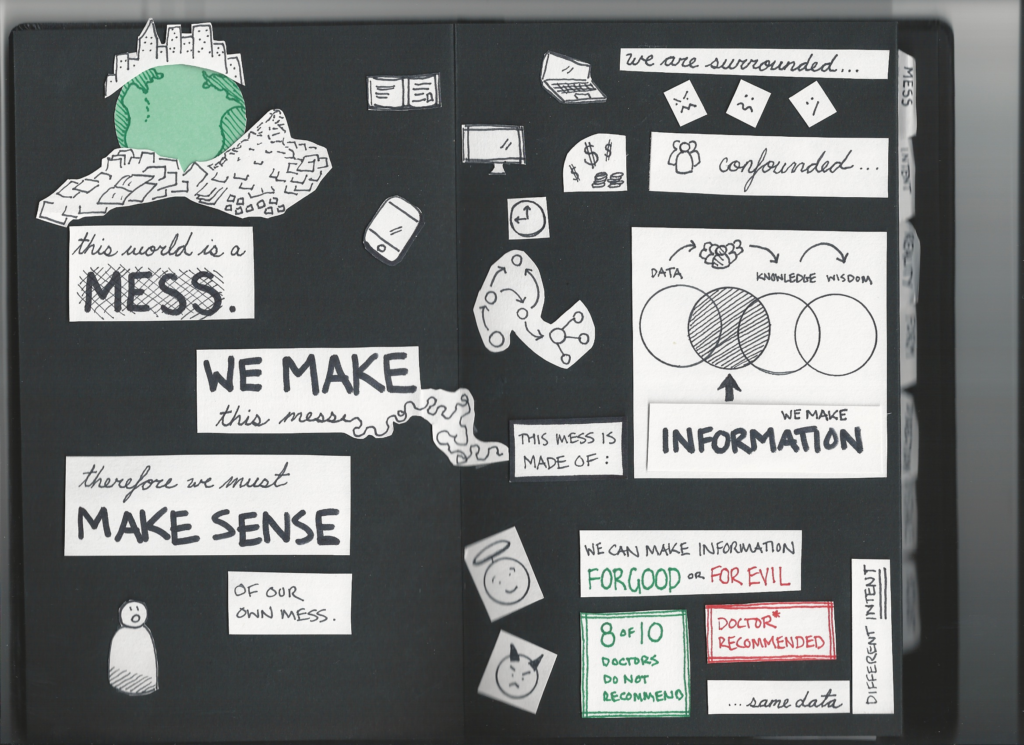
I found this activity to be so helpful that I revisited it when working on my next book years later. Like my first, the original draft emerged organically. I wrote a treatment for a whole book as it came to me and then tested it with a small group of readers.
While the subject of the book was clarified by this exercise, and getting reader feedback on the concept, I knew it wasn’t the right structure for the book I wanted to eventually write.
To better understand what I had to work with I reverse-engineered a map of the structure of the treatment I had written. With this map in view, the problems were clear. And mirrored the feedback of the test readers that round.

Unsurprisingly, I could see that the structure I had written into was too weak to have the impact I wanted to have with the final book. I started to think about what kind of structure could reach that intent I had in mind.
I took the individual pieces of content from the first treatment and added them as elements on a new diagram initially without any structure. Then I added new content ideas based on reader feedback on the treatment, diagrammer interviews I had conducted and deeper desk research on the subject.
What I landed on was a map of the next version of my book. Then I set an alarm, and showed up each day to write approximately 1000 words (or 2 hours, whichever came first) according to what was next on that map.
The map took the decision fatigue and idea generation out of writing. I could just focus on how to say the thing I wanted to say, not deciding what to talk about next. Using this technique I got a lot of words on the page about the right things.
Takeaway for Authors: Having a map can make the writing part feel less scary. We wouldn’t go into the wilderness without a map as our plan A. Why should we take on the treachery of writing a whole dang book without a map?
#2 Controlled vocabularies help writers, editors and readers
Warning: This is the part of my advice that feels most applicable to non-fiction writers.
I want to talk about controlled vocabularies and how the lack of one can impact your (non-fiction) book’s ability to be clear.
When you write a book about a subject, you are responsible for altering the structure of the reader’s mental model. If mental model is a new term for you, allow me to expand for a beat to explain this important cognitive concept.
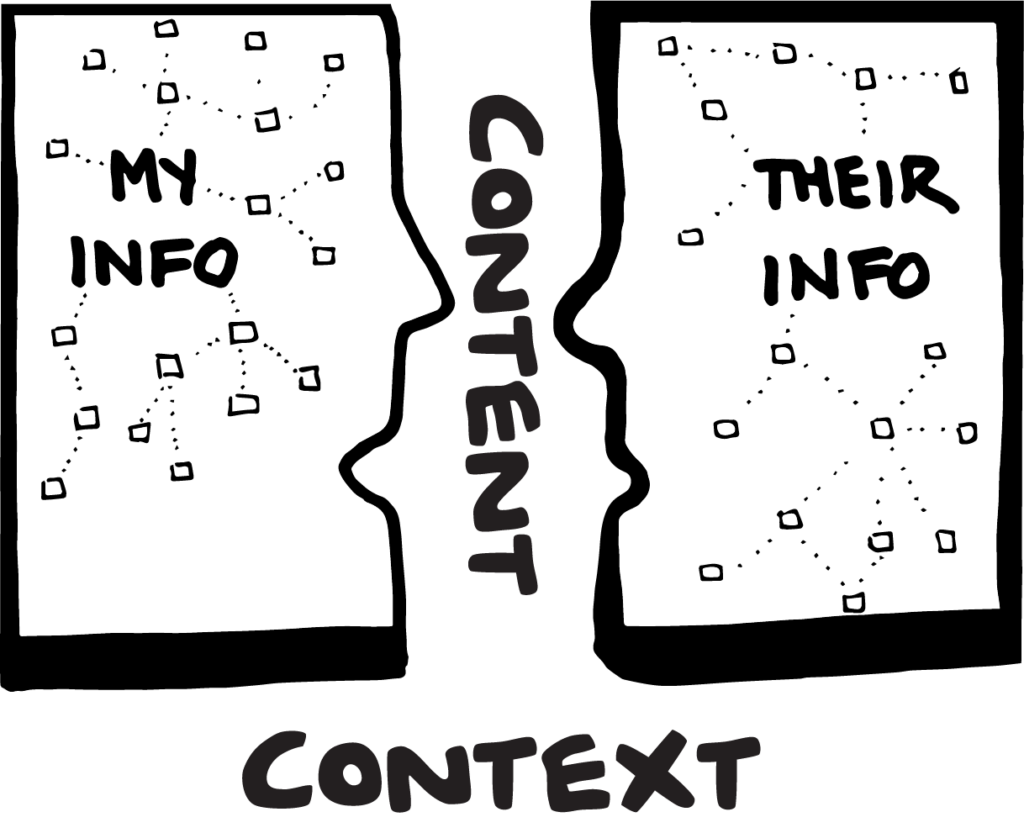
You can think of a mental model like a unique map of knowledge that each of us has individually in our minds. No two of us have the exact same map, and no one including us can access our map directly. Nonetheless we use this map to decide what things mean, all day, everyday – from the most mundane interpretations to the most complex of decisions and understanding, everything stems from the contents of this invisible map in our minds.
For example: If you were teaching someone how to make pancakes, and their mental model already had basic cooking knowledge, you would approach them differently than if the whole of cooking (or pancakes for that matter) was missing from their mental model.
As a (non-fiction) author we are introducing (and sometimes naming) terms and concepts and then hoping to use those terms and concepts to build deeper insights and in some cases suggest action to our readers.
Problems of misunderstanding can arise when we are inconsistent with the ways we describe those terms and concepts. In the most mild of cases this is a little stumble for a reader. An “oh that is the same as that” moment of realization. But in the worst of cases, readers can leave more confused than clear.
When I wrote How to Make Sense of Any Mess it was my first time working with a professional editor. One of the most impactful things they worked on with me was a style guide. And as a part of that style guide we started to make decisions about what I would and would not say when editing my writing.
As I thought forward to the indexing process, I started to see that having a list of terms I was consistently using would not only strengthen the work, it would also make indexing so much cleaner.
I went through the manuscript and highlighted all the main terms and concepts. Then I wrote them into a spreadsheet and arranged them alphabetically. I defined each one and then read the book and checked for places where I either was using the wrong term for something I had already established or where the definition needed to be edited or accommodated better.
Then when the book was done, I used that same list to index against and provided the definitions to my readers as part of the index. In the book, I even share a list of words I do not say as a lesson on the importance of controlling our vocabulary when trying to reach our actual intentions.
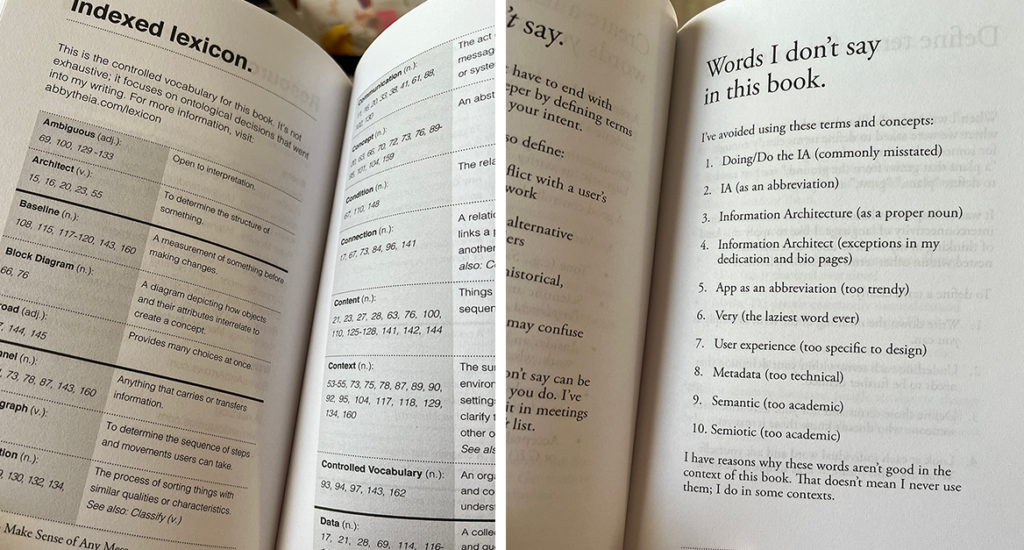
Take-away for Authors: Whether you choose to share your controlled vocabulary with your readers or not, the use of one in your writing, editing and indexing process will make your (non-fiction) book more clear.
#3 Wayfinding matters to the reading experience
Wayfinding is a term used to describe the signals from the maker that the audience can use to know how to move through the content provided. The term is closely linked with information architecture and also has deep roots in signage design, environmental design and interior architecture.
There are several common wayfinding devices we can use to make the contents of a book be more enjoyable to traverse:
- Table of Contents
- Chapter Start/End Pages
- Sidebars, and call-outs
- Directions to other places in the book or other resources
- Page footers indicating location
- Indexes & Appendices
The collection of decisions we make about this list of wayfinding patterns means alot to whether our book delivers on our intent.
In most non-fiction books, especially those intended to be instructive, more wayfinding is better for readers than less. These devices strengthen our ability to reach our intention with our readers all the way through. This is because wayfinding, when done well, can reduce the cognitive load of a book on its readers.
Think about opening a book that has nothing but dense type for hundreds and hundreds of pages vs. a book that provides chapters, and sections and breaks of whitespace for the reader to rest and gather before moving on. One is more pleasurable as a reading experience, but both are valid approaches – depending on the intention.
In the example above of House of Leaves, the lack of traditional book wayfinding was used to create confusion for the reader which was in line with the story’s intention. If it had been a book written about the story, instead of a book that felt like a random pile found by someone without much context, it would not have reached the intent of the author.
While this might seem like a job for your book designer, I assure you that thinking about wayfinding and information architecture is a powerful exercise in book design that is best started with the author, not the book designer.
Take-away for Authors: There is a lot of connective tissue an author can add or optimize in a book to make the reader’s journey through it more clear. Some book designers are indeed great at pulling these wayfinding devices out of raw author-created book content, but there is no one closer to the intention of a book than the author. Thinking about the IA and specifically the wayfinding of a book should start with the author to be the most inline with the intention of the book.
#4 A book is a system
A system is a set of structures. By that broad definition our use of language to communicate ideas to others in the form of a book fits beautifully.
As an information architect, systems-thinking has been front of mind for me for my whole professional career. But as an author, I had to stumble quite a bit to understand how my systems experience could help me to be a stronger author.
When I wrote How to Make Sense of Any Mess, I could not have known and did not expect for it to sell many copies at all. In fact, I assumed only my students and friends would really buy copies.
Now all these years later, I see how my approach to writing that book as if it was a system is a major part of its strength and clarity with readers.
But I have also learned the nightmares of figuring out after the fact how your book’s system cannot scale to meet the needs of other readers without significant rework.
Here are some of my lessons learned on my first book I have since worked to or are currently working to remedy:
Enable Multiple Contexts
As a graphic designer originally, print books are a first love I doubt I will ever get over. I wrote How to Make Sense of Any Mess as a printed book and did not think about how changes to reader context might be required if the readership for the book was to grow.
This weakness made the eBook project challenging because I had to start it from scratch and has ultimately held me back from exploring other contexts like audiobooks as an example.
When I went to take on my second book, I tried to improve on my process by keeping in mind the multiple contexts from the beginning.
The places I found myself preparing for multiple contexts the most were:
- Whenever I reference specific locations in the book, I think about what it means for multiple contexts to reference a specific page number, or use words like “Above”, “Below”, “On the Following Page”. I tried to do my future self (and editor) as many favors as possible by eliminating anyplace in the manuscript that I was overly specific about location, and being thoughtful in times that I did to note it for other contexts later.
- Whenever I add a visual, I think about whether it could be audibly described or would be better in an alternative form for audio-only readers. I started a spreadsheet to capture those decisions and then used it to catalog and write all the alt text for the eBook. If I do ever decide to tackle the audiobook, I have a lot to start from in translating the visuals into voice-over narration. This spreadsheet is one of my favorite examples of IA I have made in the last year.

By doing all this work while in the flow of writing the book, instead of as a production task after finishing the writing part, I have found new strength for my work.
A great example is how many times when writing alternative text to describe a diagram in the book I ended up writing something so useful I included it for visual readers to benefit from as well – often increasing the clarity of the original diagram.
There is a truth of information architecture that applies so nicely here. Your IA already exists, the question is whether it is working for or against your intentions.
If you are an author who expects to have a print book, eBook and audiobook – thinking about how to enable multiple contexts from the start and all the way through the writing process will strengthen your ability to reach that intention.
Provide Translation Guidance
At some point, there may be a case for your work to be translated into other languages. This is an honor for any author, as well as a MAJOR test of the structural integrity of your book. You can think of other languages as whole other contexts for your work. And along with that contextual shift is a whole list of new wrinkles to smooth.
Cultural References & Examples
When a book is translated, examples are one of the things that can get the messiest. Here are two examples from How to Make Sense of Any Mess where examples needed to be considered extra carefully when being translated.
Sometimes a word’s specificity doesn’t translate. For example I used ‘Pool’ as an example of a homograph. But in other languages, there are different terms for the multiple definitions that pool shares in English that make it a homograph. If we translated using a word that meant the various meanings of the word ‘pool’ the reader would have left with a very confusing interpretation. Instead we had to choose a word in each language that had the capacity for multiple contextual meanings.
There are also times when the use of the specific English words is more understandable than the translation. This can be the case on academic terms, but also in the case of cultural references. For example, I direct readers to Google Image search “Used to Be a Pizza Hut” – but I can assure you there are very few results for the translation of that search term in other languages. In this case, directing readers in another language to use an English term is a better service to them and increases the likelihood of them getting the message I was intending to deliver.
Cuteness & Turns of Phrase
A heart-breaking moment for an information architect turned author is the realization that a sentence that is clear in English might be clear as mud in another language. For example, does “clear as mud” translate in every language? I would have to ask my translators.
An interesting example came up recently in conversation with Professor Mariana Brandt of Sao Paulo State University who is currently in the final editing phase of her Portuguese translation of How to Make Sense of Any Mess (eBook Launching in 2023!)
She was working on translation of the following sentence where I got cute:
“…pizza is a concept on which many actual pies are fired.“
In this sentence, an English reader would more than likely recognize that when I say pies, I am referring to 🍕 pizza pies, not 🥧 pastry pies. But in other languages where the concept of pizza does not include the inclusion of the concept of pie, this is a challenging sentence to translate.
Instead we could change the sentence to something easier to translate:
“…pizza is a concept on which many actual pizzas are fired.”
This is a great example of how a single word can change a sentence’s ability to deliver on an intention. Unfortunately in this example the sentence’s function is to teach the reader about the relationship between models and instances, and the mismatch of pizza and pastry really obfuscates that lesson.
There are times when we write in ways that make translation harder later on. I find that language cuteness and turns of phrase like this can lose readers of other languages when translated. Also, if I am honest – they aren’t always clear to English readers either.
Take-away for Authors: There are systems-thinking approaches authors can take when writing to more easily allow for the extensibility of our work into other contexts and languages to reach more readers with our ideas.
Four Ways to Improve a Book’s Information Architecture
If you haven’t picked it up already, I think information architecture as a skillset is pretty important. Especially for those attempting the soul-nourishing, and perception-defying work of making sense of things for other people.
Authors are natural sensemakers and it requires a modicum of information architecture to write a book. There is additional attention that can be put on the information architecture of a book by the author that will result in a clearer book.
Below is a list of the four information architecture methods covered in this article to apply to your next writing project:
- Make a map of the book you want to write, then write to the map.
- Identify a controlled vocabulary. Then edit and index using it.
- Consider the proper wayfinding to match the intention you have for your book. Assure your intention is upheld through the book design process.
- Take a systems-thinking approach to the creation of your book to best enable multiple languages and contexts as readership grows. Consider how specific examples, images or turns of phrase might get lost in translation of either context or language.
If you enjoyed this piece and want to read more related to IA and authorship, check out these other long reads about my process of writing How to Make Sense of Any Mess or convincing an author hero of mine they are already an IA.
If you want to support my work, the best way is by signing up to receive my monthly email, signing up for my courses or making a purchase from my Etsy Shop.
